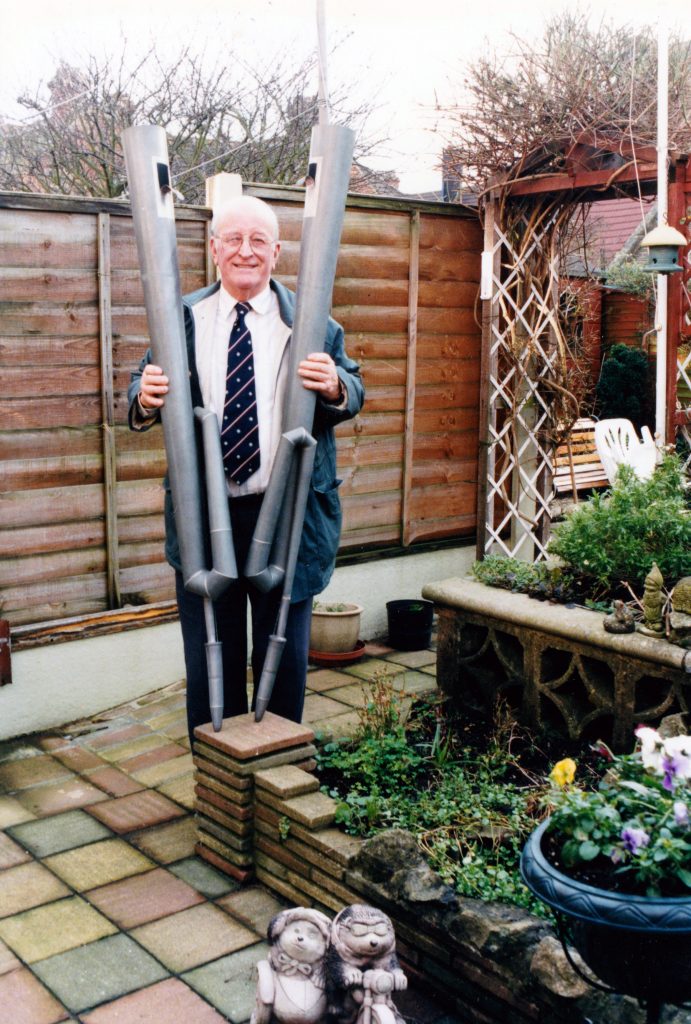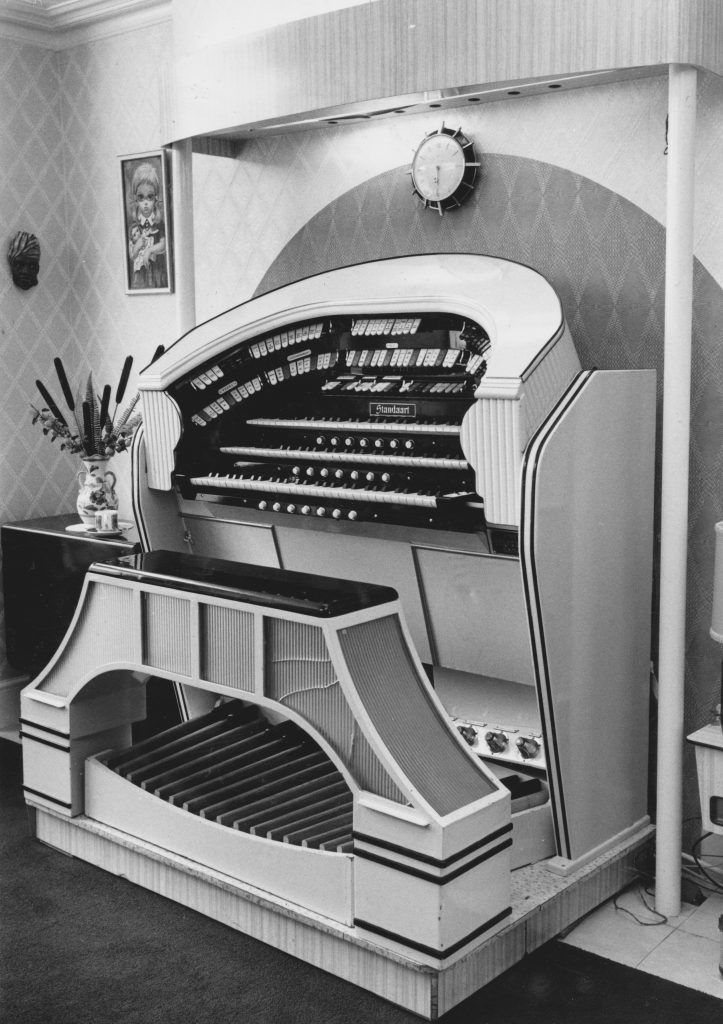
An Organ at Home – v2.0
1967-2021
This incarnation of the organ was completed in November 1967 and saw 3 manuals and a traditional horseshoe for the stop tabs instead of the previous straight arrangement.
These alterations were made possible by Paul Gladson who was an American living in Folkestone. He had acquired the console from the cinema after offering a higher amount to the current building owners. He had to return to the US and thankfully invited Ricky to reunite the console with the rest of the organ.
Sadly the Standaart console was not in good condition and has been altered several times during its life in the cinema, this meant very little of the original console was salvageable. Only the two keyboards, original stop sweep, piston pneumatic relay and the effects toe board survived.
Click for a full technical specification of this Organ
Diary
Ricky kept a diary detailing all he did from about 1967 onwards, so here are some extracts (Mostly shorthand) detailing the important parts of the instruments progression.
July 1968: Electric action made up to operate the 20 chimes. W.D solenoids used after suitable modification. Relays made in order to handle the heavy current. Further relays made up for operating the accompaniment traps some from manual and others from both manual and toe pistons.
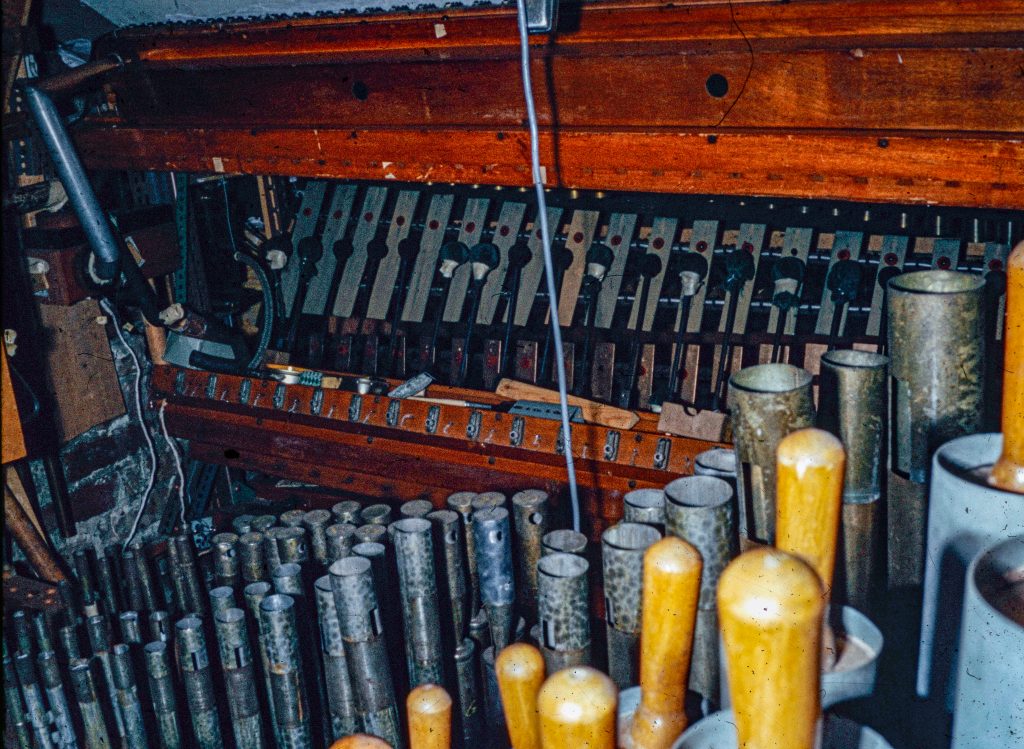
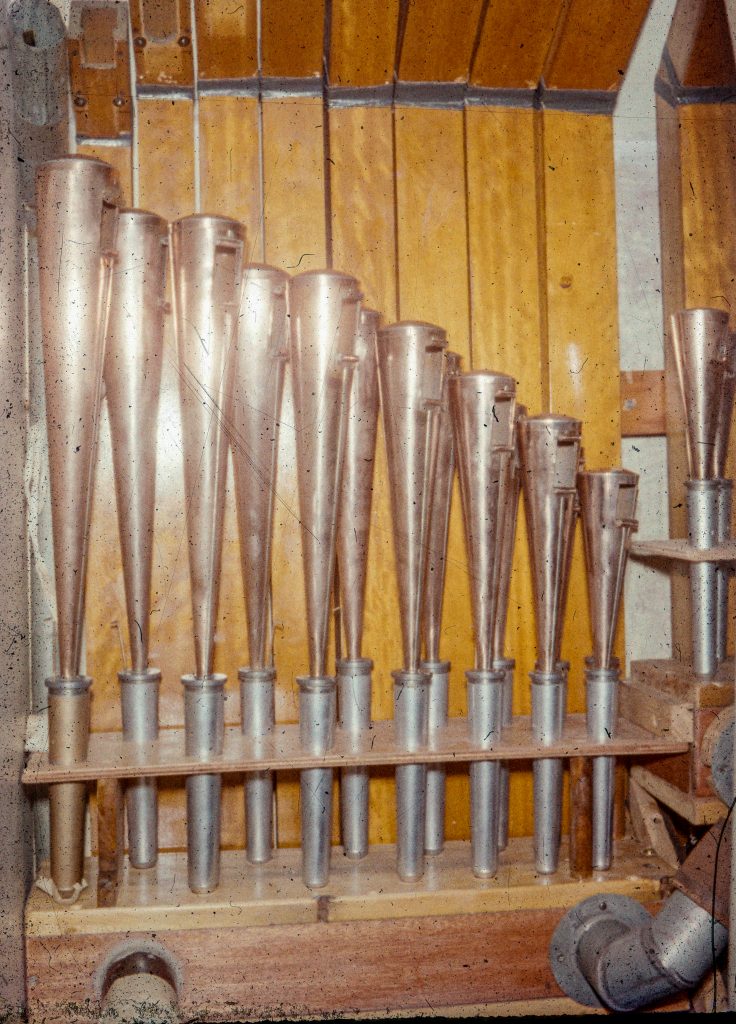
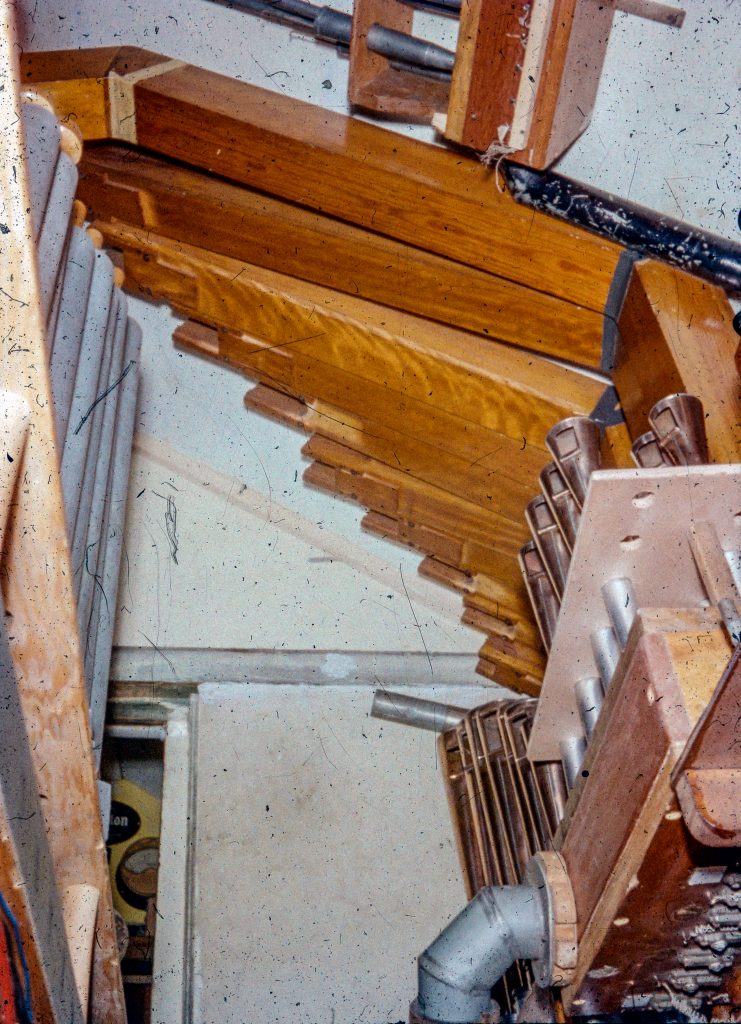
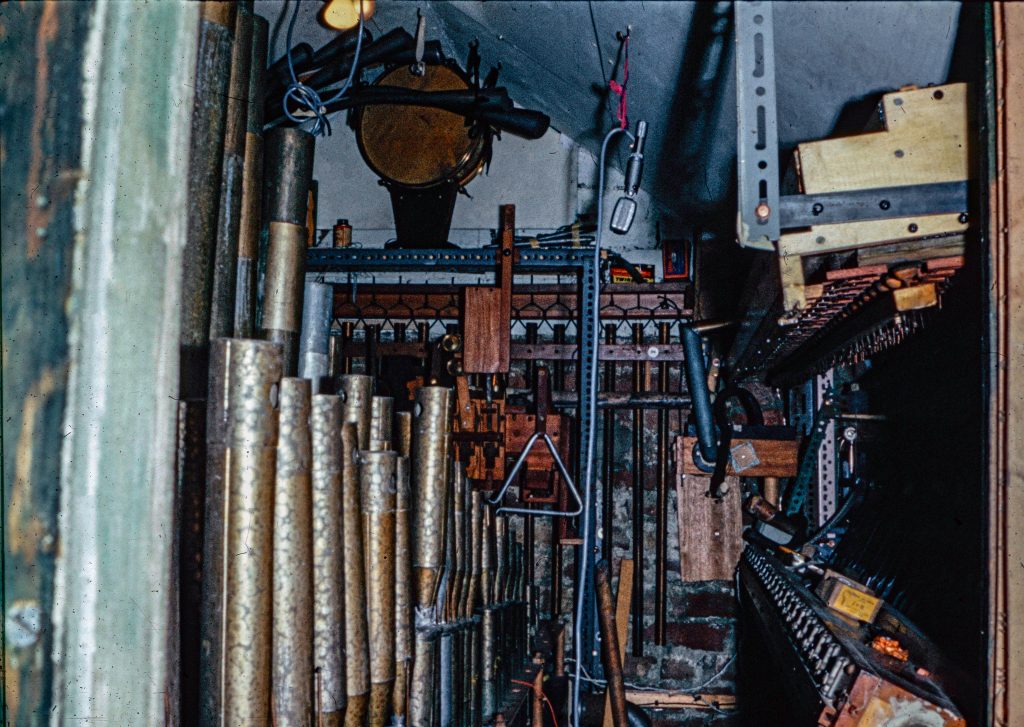
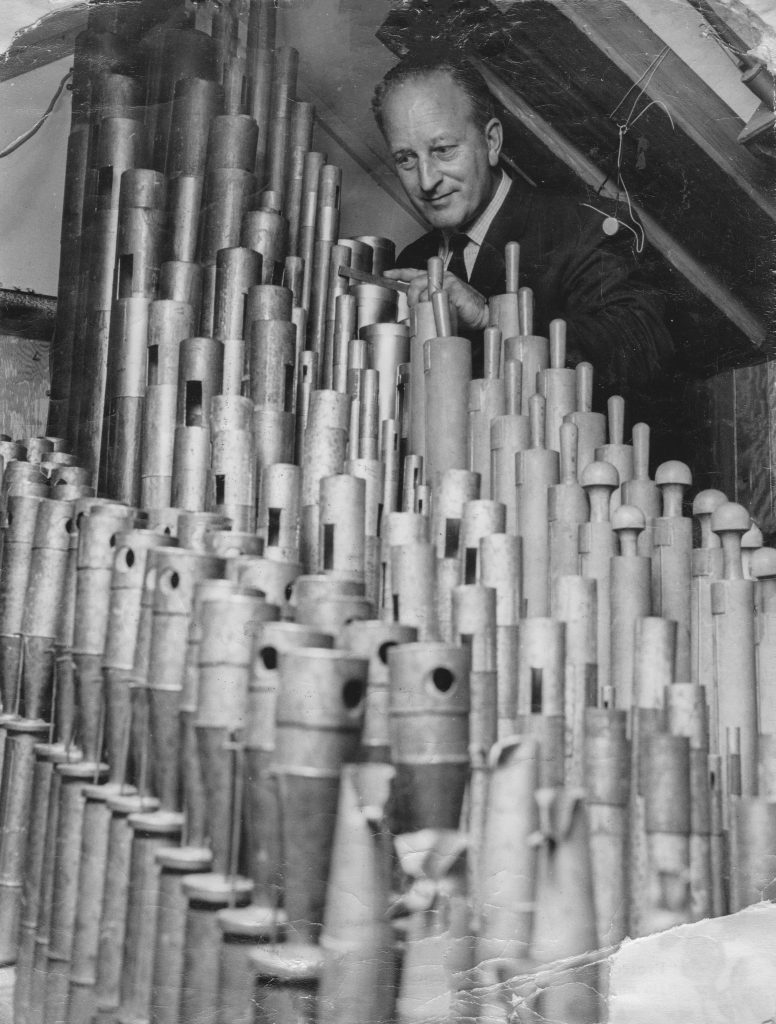
August 1968: Answer received regarding rank of Krummet pipes and relay box. Advert turned out to be GC Barlow, Everest works, Greenfield Avenue, Hornchurch. He suggested swapping the Krummet for my rank of Saxophones and further swap for my spare Snare Drum (ex- Compton Pleasure Gardens) and Xylophone for setter board and main cable. The latter two items required by me for setting up of 3rd manual. A further deal agreed for relay box of 27 bars to be collected from Hornchurch works when available (at present the pipes are in the West Country)
31st August 1968: Travelled up to Hornchurch with Standaart Saxophone pipes, Snare Drum and Xylophone. Collected 12 low pressure stopped flutes (wood Pipes), 30-ft of main cable and the great relay box. The latter came from the 3-8 Compton from the Gaumont Chadwell Heath factory job number A234 22nd of March 1934.
2nd April 1969: Have now decided to remove Vox Humana from it’s installed sound board in order to increase pressure to that section for the Krummet (at least 10 in). Now re-housing the Vox will have to be accomplished by placing on odd lengths of soundboard here and there.
September 1969: Design worked out for music stand based on the design of the Compton from the capitol Cinema Aberdeen.
15th October 1969: Brian tonight gilding the music stand. Glass from the bench has been removed and fresh is now being cut and sandblasted. Last remaining chest bought home and cut in half to provide a home for 37 Vox pipes.
8th November 1969: 8ft octave of Gamba pipes removed to make room for 37 note chest for Vox Humana (just reconditioned) along with part of Standaart chest. A reluctant step with the only one which would make it possible to install the Krummet rank. This now means that the Compton Viol rank ends at 4-ft C but it is hoped to find a spot for a few of the 8-ft Gamba pipes perhaps down to GG. The 8-ft octave of the Flute should soon be installed on the end of the existing flute chest.
25th November 1969: Small chest of 14 salicional pipes placed adjacent to Vox trebles (on wall) taking the salicional rank up from A3 to A#4. Several pipes are missing in the following octave which will make it impossible to complete the full rank and the above mentioned will need careful attention before such is satisfactory.
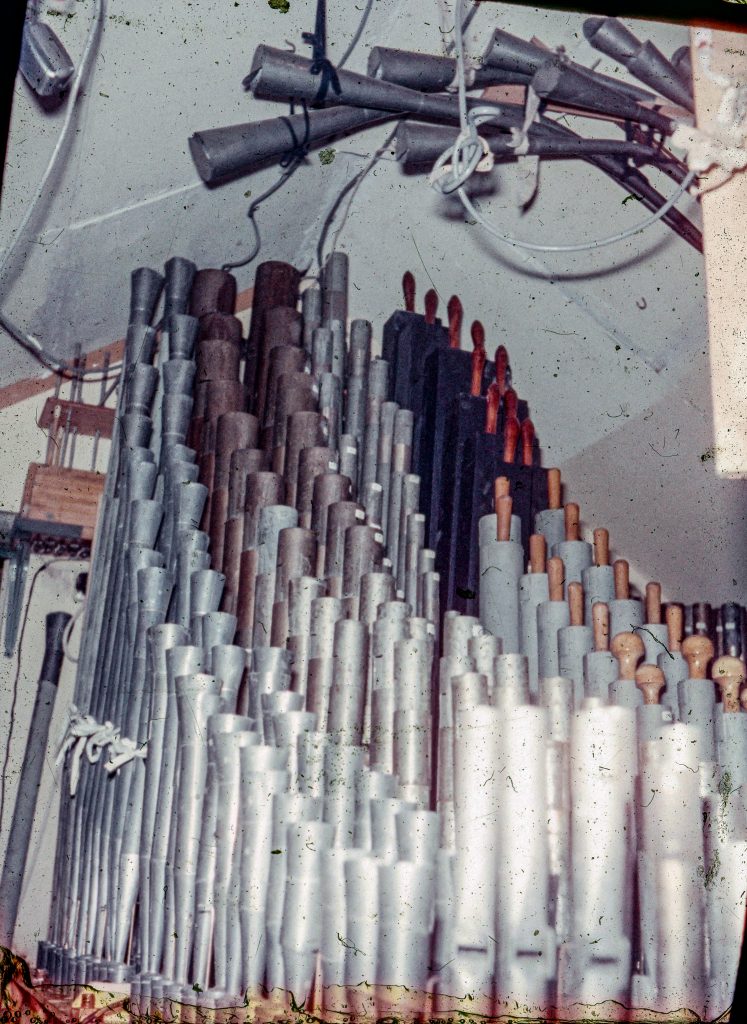
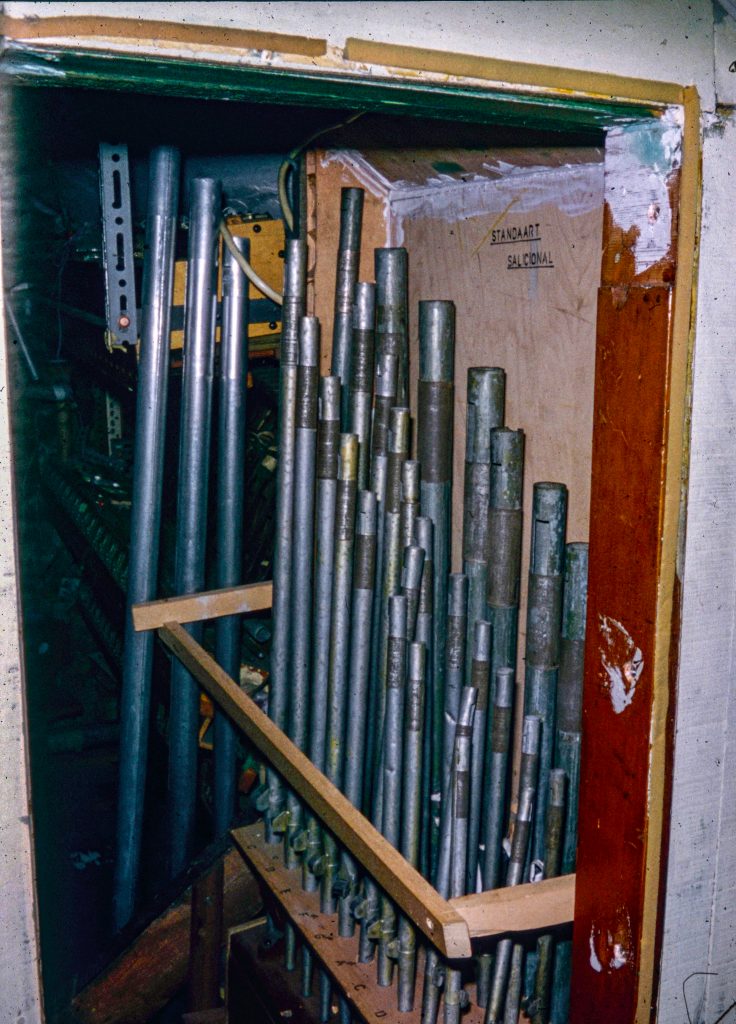
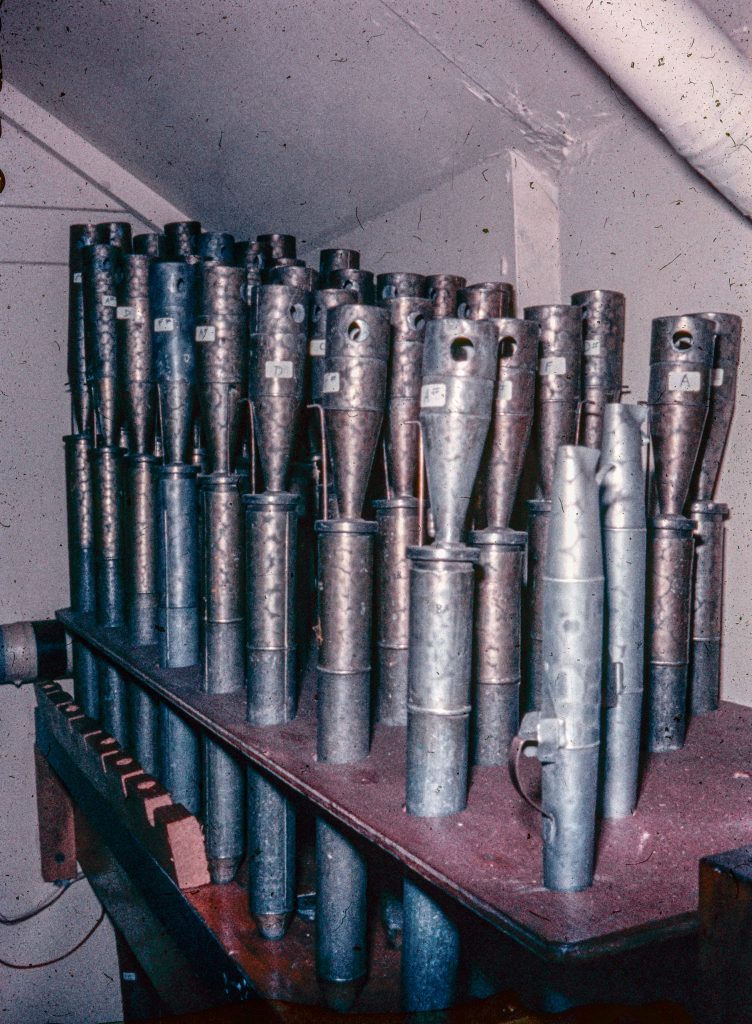
30th November 1969: Most of the day spent in the organ chamber. The Gamba 8-ft chest cut up to provide an 8 note chest to fit in front of the Vox chest and will house whatever is practical space-wise. The two bottom positions of this chest have been made into a separate chest and fitted it with the CC & CC# flute bass which are now secured horizontally beneath the tibia chest.
February 1972: Post office style telephone relays used to set up a system for covering the bottom end gaps on the manual caused by the absence of 16-ft pipes and in some cases 8-ft. This is to be achieved by borrowing from the electronic pedal stops.
April 23rd 1974: Visited by Bobby Pagan who soon acquainted himself with the Standaart.
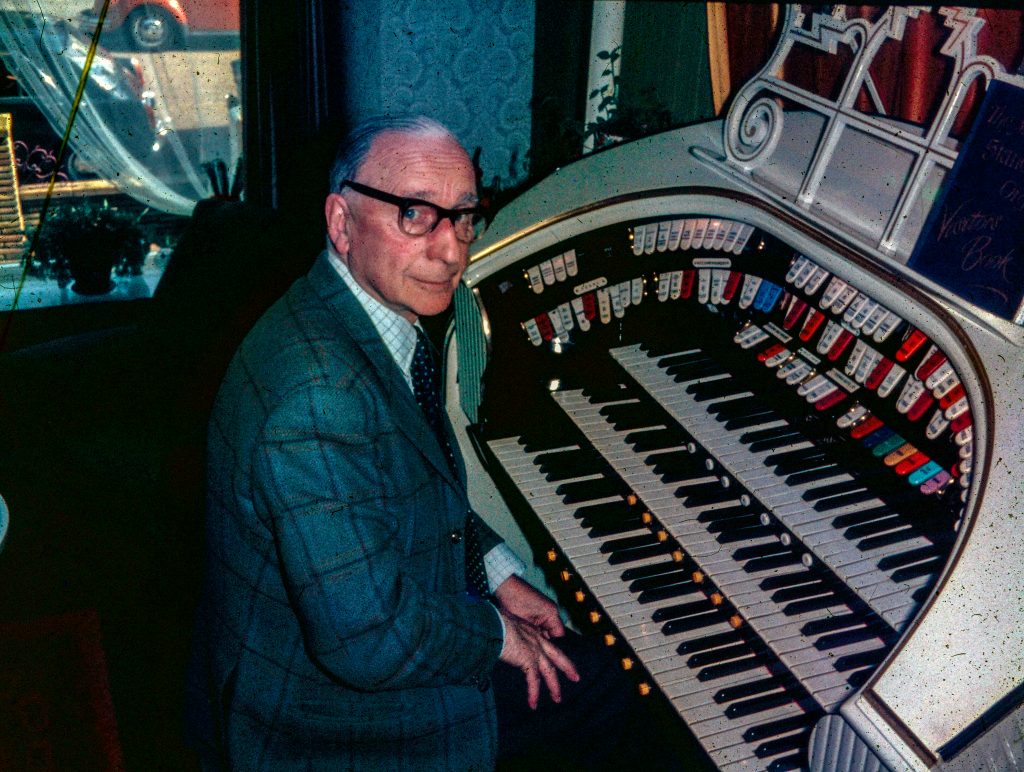
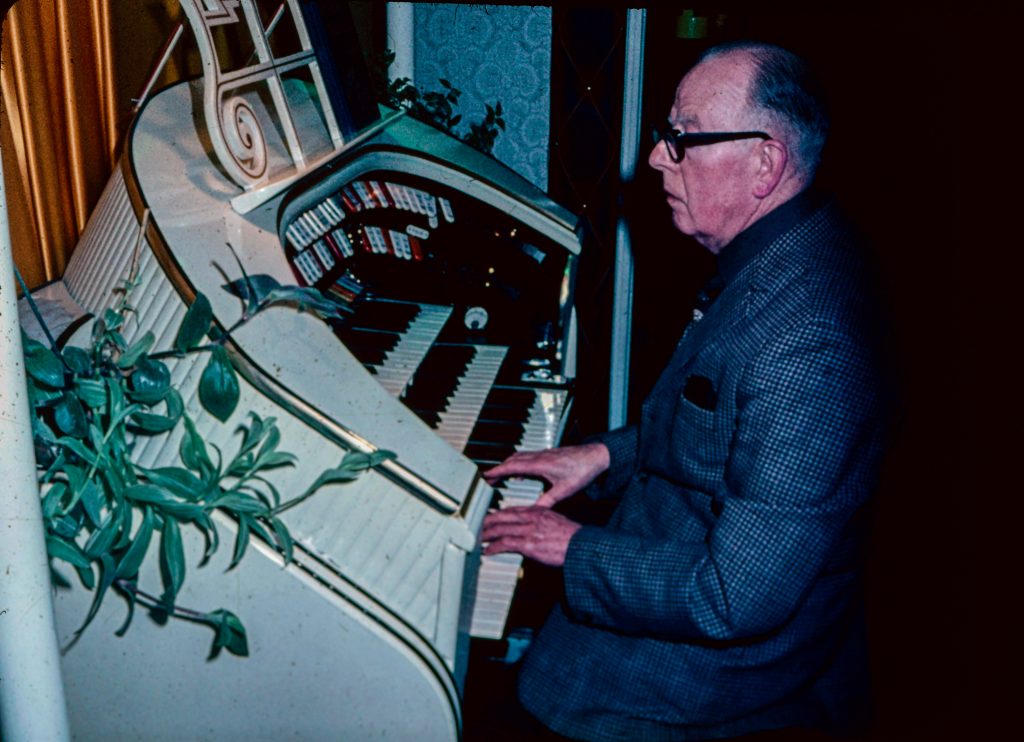
August 1st 1976: Standaart visited by John Howlett renowned organist formerly of the Odeon theatre Leicester Square London. Fine use made of 2nd touch on accompaniment manual producing a counter melody.
December 12th 1976: Modified chest fitted in organ chamber to house 2-ft octave of tibia salvaged from ODEON Compton and wired to the distribution board.
October 8th 1978: Visited old Savoy Cinema and removed organ blower from it’s resting place above the stage (permission granted and no charge made) identical type of blower fitted to the Standaart organ in Leeuwarden.
February 5th 1979: Site now chosen for new blower installation now to be mounted alongside boiler and hot water storage tank in large cupboard at top of stairway.
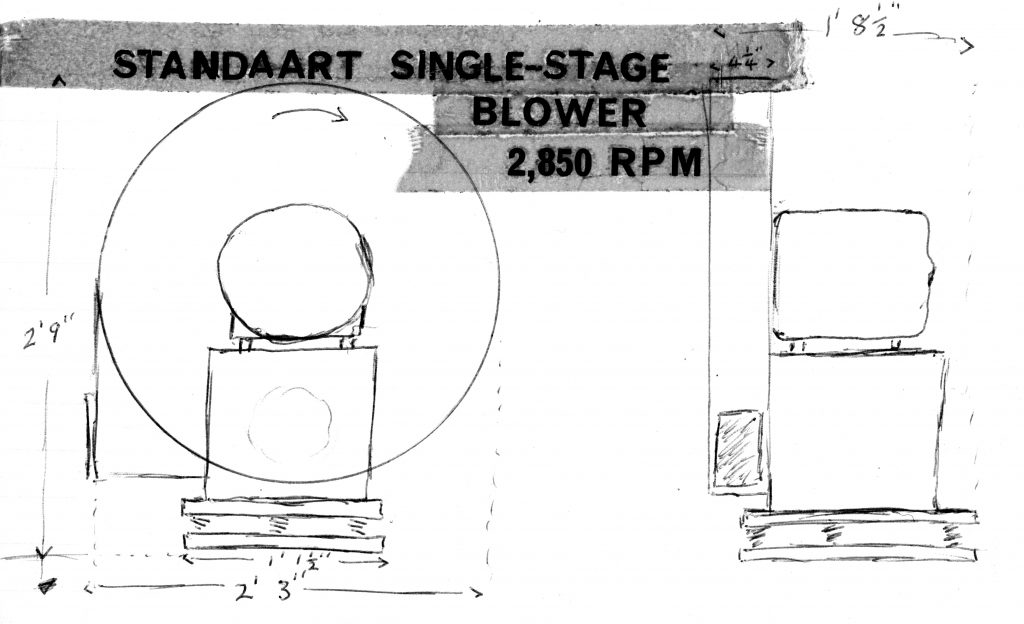
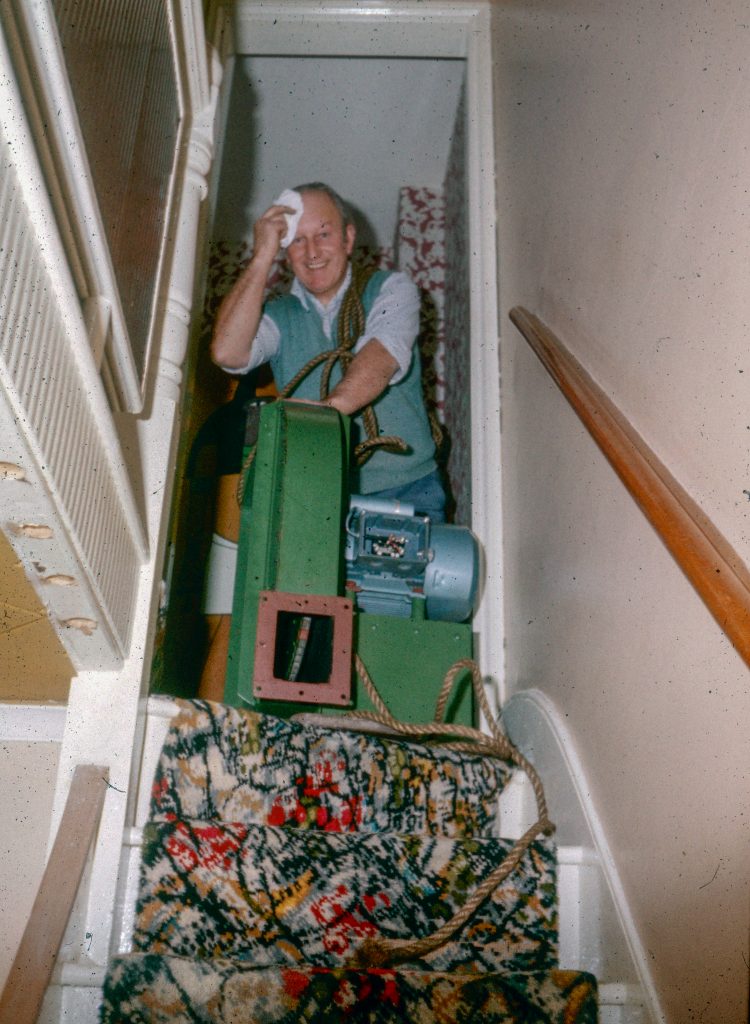
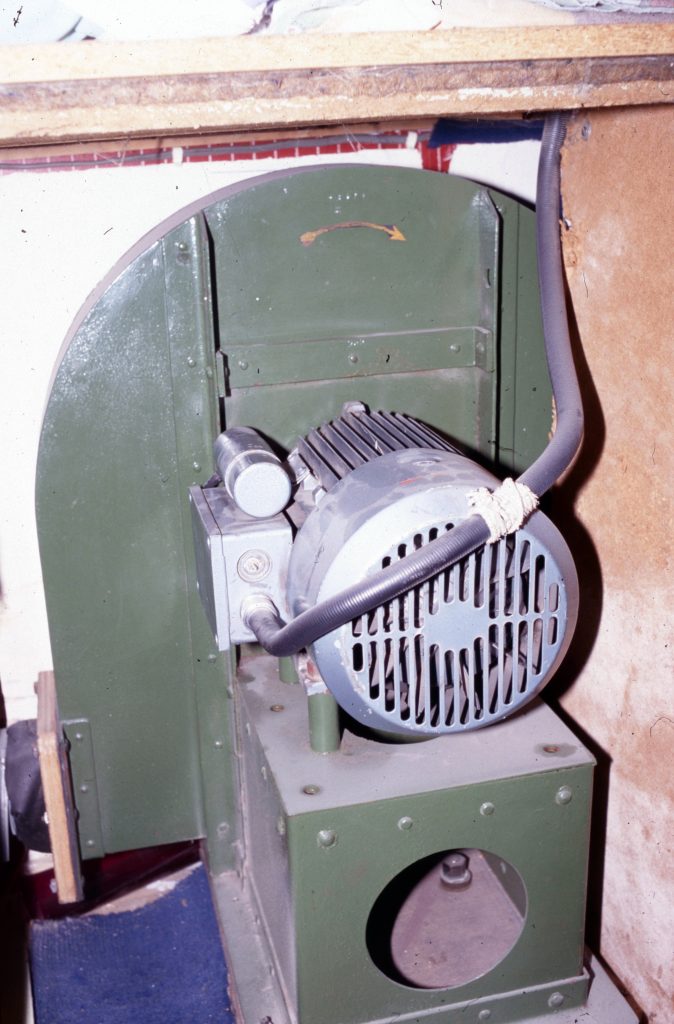
April 1st 1979: Built a regulator of my own design for use with the Vox Humana. Folding bellows of a conventional nature for easier method of construction.
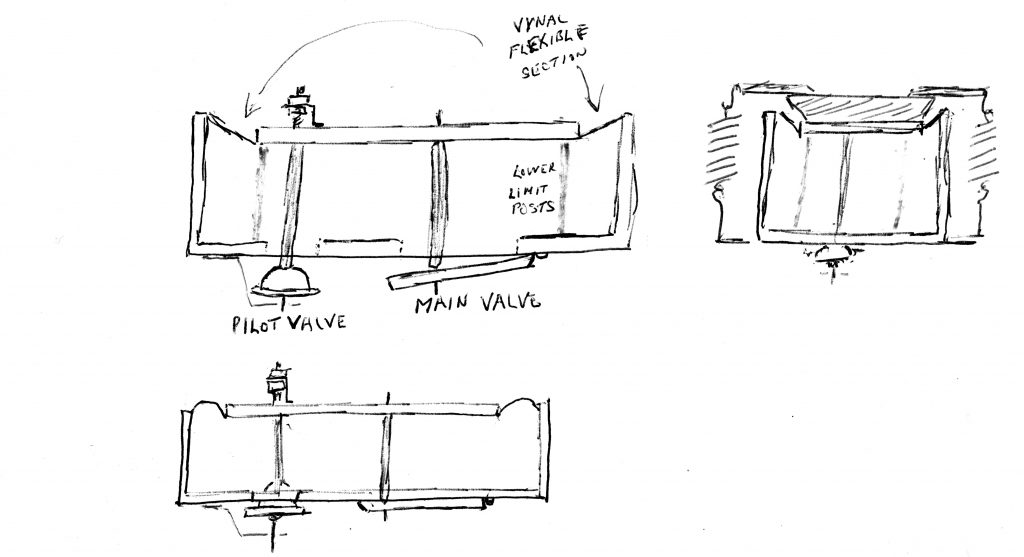
June 28th 1980: Received the second of two letters from Ray Booth of Branksome in Mansfield Nottingham. He advertised a Compton wooden tibia rank for sale and sort a Krummet or muted trumpet. He showed great interest in my Krummet rank and two of my redundant blowers from 1965. There is a possibility that he will travel down with transport to carry out the swap – Not the tibia rank but a Vox Humana. I understand that the new one is a pretty good example of Compton craftsmanship of the mid-20s and of small-scale. this should suit the tibia better.
September 11th 1980: Ray and Vera Booth arrived from Mansfield together with Roxy and 73 Vox Humana pipes and a rank of Viole pipes. Noted that the Standaart Vox is of sturdy construction and larger scale. Tongues constructed of heavier gauge brass although only 6 inches WG pressure required to drive them. The new Compton pipework comes from Rays home installation, the Branksome Compton which was formerly in the Regal Cinema Handsworth Birmingham (job number A22)
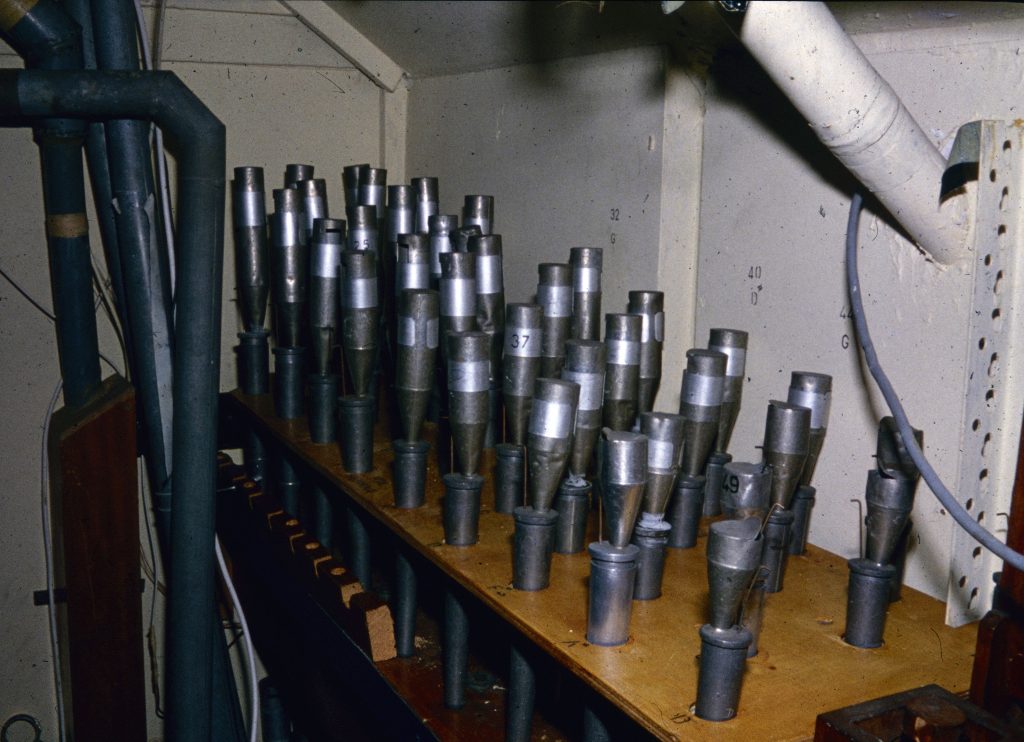
September 14th 1980: Ray and Vera leave for home with the Krummet rank and a 1.6 hp blower for his instrument. Compton Vox hurriedly fitted into chest for trial run. Alterations will have to be made to the pipe holes at the treble end of its rack for the Compton rank extends further up the scale with reeds than it’s predecessor. Instead of using both the Standaart and Compton Voxs it would be more advantageous to use the chest vacated by the Krummet for the Viole rank. This should serve well as a Celeste rank with the Violoncello. Just how many of the bass viol pipes will be able to be accommodated remains to be seen!
October 26th 1980: Last to Viol bass pipes of the 8-ft end mitred and fitted CC and CC#.
December 13th 1981: Purchased a piano accordion second-hand with a view to installing it into the organ. 41 notes on keyboard from F to A with coupler. Accordion could have been placed on a stand beside the console but for space reasons it’s to be installed in the organ chamber. There are three banks of reeds which can be removed from interior of the accordion and placed on a chest to be constructed.
September 1984: The solenoids which operate the chimes on a purely electric action have not been 100% successful and now have been removed. A new chest has been constructed using strong hardwood recently removed from the front garden fence cleaned up as new. 20 pouches to drive the mallets made with rubberized material from REME, Ashford and 1/8 in brass rods used for the studding to operate the air valves.
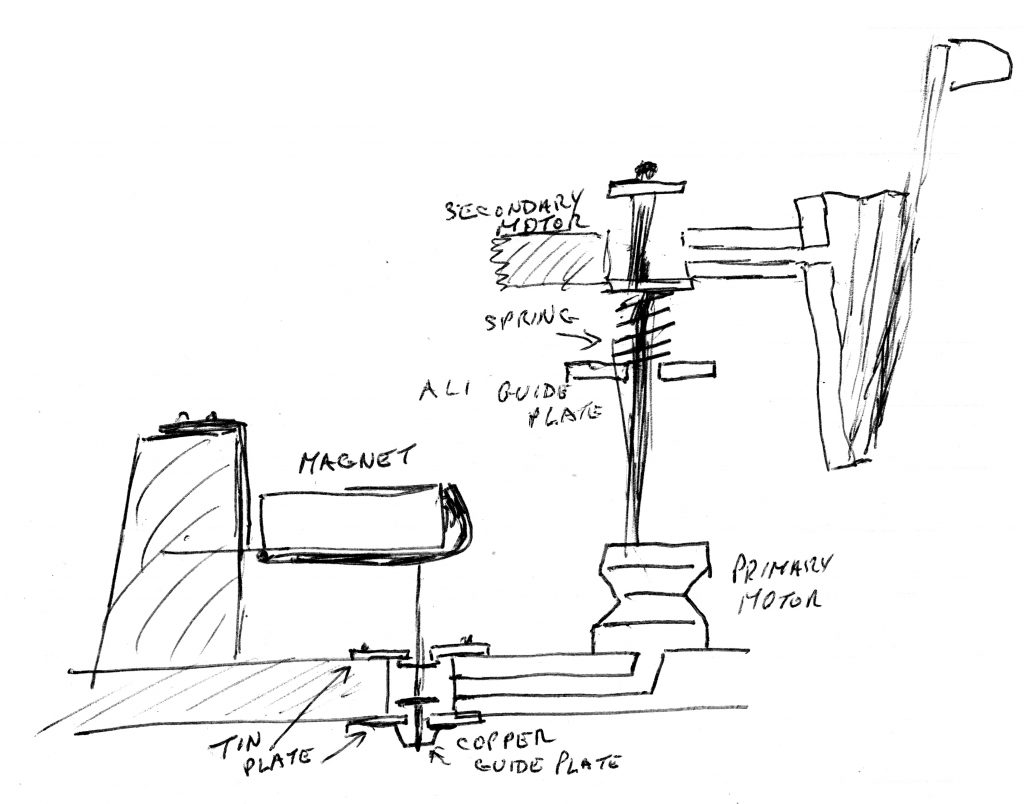
August 1989: Baptist church in Rendezvous Street visited during its conversion into a shopping centre for I heard the pipe organ was still in situ.
Full history of the church and organ here
September 1989: further telephone conversation with new Baptist church owners revealed that the pipes will be staying when they are at present. The part rank of Standaart Salicionals removed and the space will be used for the base end of the oboe if I can acquire the 8-foot octave.
March 22nd 1991: Called at portfolio House Hythe to see the managing director of the Baptist gallery conversion. After showing them the photographs of the Standaarts progress over the years they seemed impressed and gave me permission for recovering the Oboe pipes as soon as I like!!! (having waited since September 1989 )
March 25th 1991: Spend the morning at the Baptist Church galleries extracting the oboe rank from the swell box. The Cornopean rank was a fine example of a big reed and quite the temptation but would be too powerful for our roof installation! The oboe extends in pitch right down to the 8-ft CC which is one octave lower than the previous oboe installed here, but at the treble end the pipes only run to A and not to C, so 3 more trebles will have to be found to rectify this. The fate of the remainder of the instrument at the former Baptist church now looks bleak for there is evidence of some vandalism and with the remains of the console dumped formally in the blower room it’s prospects are slim.
April 15th 1991: Revisited the old Baptist Church and removed for safekeeping some of the Cornopean pipes from tenor G to the top.
June 24th 1991: MIDI interface now working satisfactory after several breakdowns. After much deliberation as to where the six octave Casio piano would be sited it has been decided to house it in the organ chamber coupled with a bold decision to dismantle the Standaart vibraphone in order to make room. The two banks of 21 notes plus the mallets and action chest once removed have made considerable space making the glockenspiel unit easier to reach.
July 19th 1991: Revisited the Baptist galleries yet again to collect 7 more Cornopean pipes taking my acquisition down to 4-ft C. It is now proposed to construct a small chest to accommodate these on the floor of the Chamber and the next 42 pipes will stand on top of the glockenspiel chest in two rows, housed in timber utilised from the form of vibraphone chest. Plastic tubes will feed the wind from the two chests now that the motors of the Mallet have been discarded.
April 29th 1992: Made a visit to the Baptist galleries after having written to the London receivers for permission to remove the Rohr Flute from the derelict church organ, the idea being to improve the bass octave of the flute.
August 12th 1992: In the shed experimenting with the manufacture of a surf effect. This took the form of a square metal funnel sealed across the top with greaseproof paper and a quantity of peppercorns inside for the purpose of bombarding the stretched paper under wind pressure. On test this sounded more like a rain effect and may be retained for this purpose. Mark II followed and this took the form of 3 sheets of greaseproof paper sandwich with spaces to allow the wind to rush up between them. Initial tests are promising.

November 9th 1996: The oboe previously was little used as it sounded only like a quieter version of the Cornopean. Today I started removing them from the chamber.
December 15th 1997: Revisited the Old rendezvous Baptist church and retrieved the 8-ft bass octave of the Cornopean rank which is hoped will replace the bass oboe pipes at present in use here. NB the former church is currently being converted to an upmarket pub after having failed as a shopping arcade.
